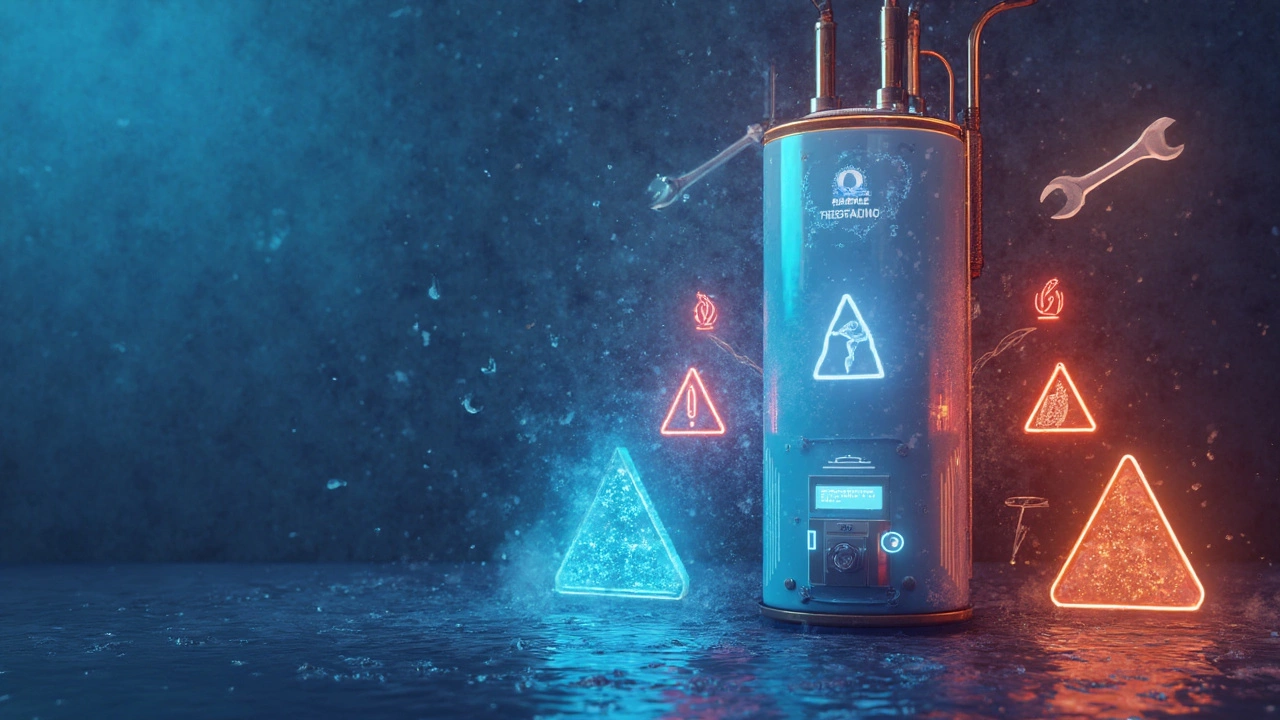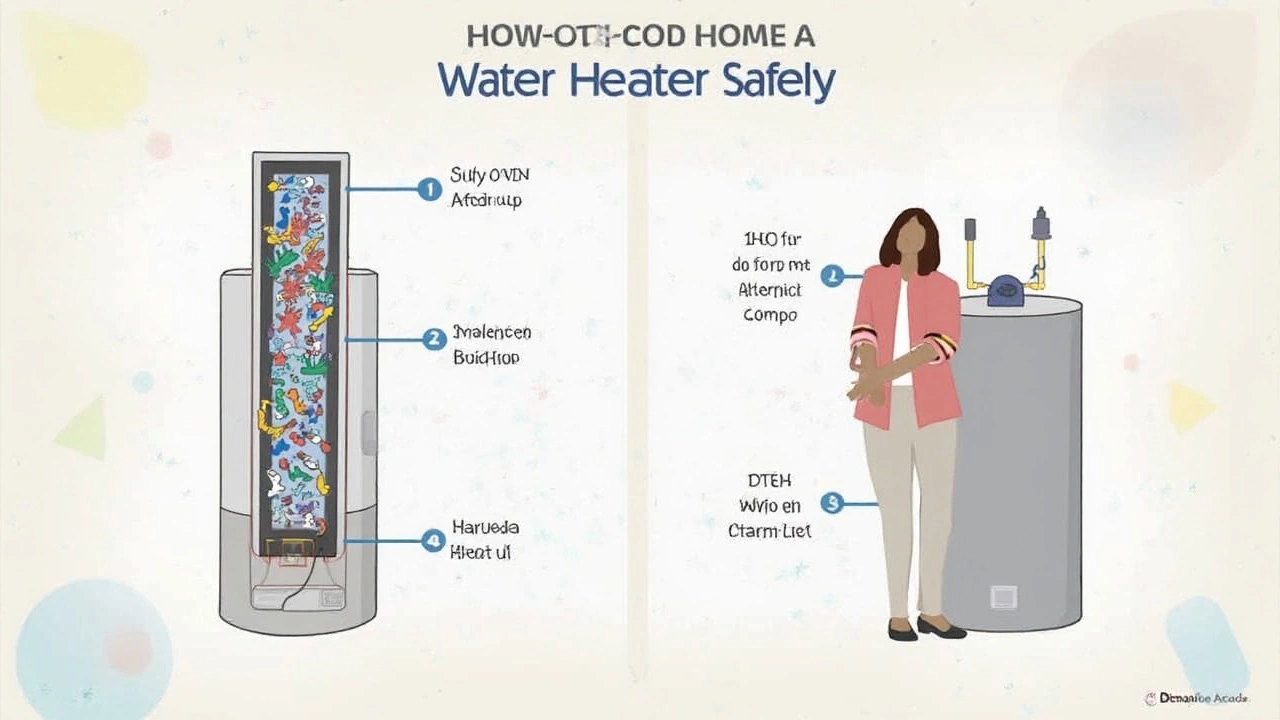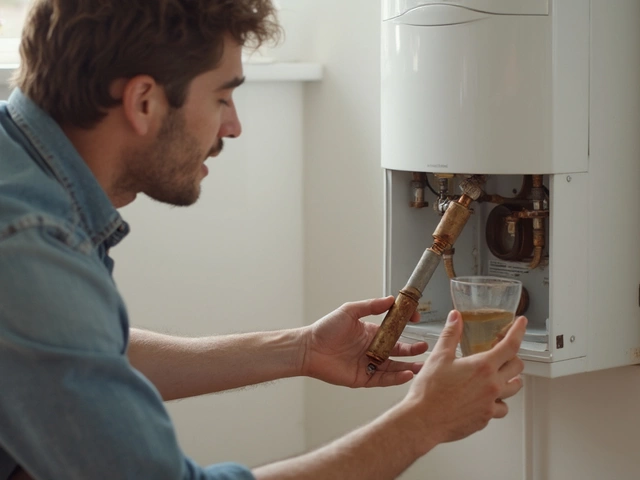Ever had a nasty surprise when you turned on the shower and the water was ice cold? That's often when people think about resetting their water heater. But is it actually safe to do so? Let's break it down so you know what you're getting into.
First off, it's good to know what your water heater is all about. It's more than just a big tank sitting in your basement or utility room. It's a pretty complex piece of equipment that heats water for your daily needs. Knowing its basic functions can help you better manage any issues.
So why would anyone need to hit that reset button? Sometimes, it could be due to a minor glitch, but it can also be a sign of something more serious, like overheating or a faulty thermostat. Before you decide to reset, identifying the cause is key.
- Understanding Your Water Heater
- Reasons to Reset a Water Heater
- Safety Tips Before Resetting
- Steps to Safely Reset
- Preventative Measures
Understanding Your Water Heater
So, what’s going on with your water heater? Think of it as the unsung hero of your home’s plumbing system. Whether it's an electric or gas model, its main job is to heat water and store it until you're ready for a hot shower or to do the dishes. But how does it do that?
Your water heater mostly works on a pretty straightforward principle: cold water entrees the tank, gets heated through a mechanism (electric element or gas burner), and then gets stored until you open the tap. Simple, right? But there's more under the hood.
Types of Water Heaters
Water heaters come in various types. Most people use a tank-style heater, which stores hot water until needed. Some are moving towards tankless versions, which only heat water when you flip on the tap—no waiting around.
Key Components and Functions
Understanding the parts can help you locate issues. Here’s a basic rundown:
- Thermostat: Keeps an eye on water temperature; you can set this to your preference.
- Heater Element or Burner: The element in electric water heaters or the burner in gas heaters is where the water actually gets heated.
- T&P Valve: This Temperature and Pressure relief valve is like a safety catch; it releases water if the tank gets too hot or too pressurized.
Fun fact: The average lifespan of a water heater is about 8 to 12 years. Knowing when to replace it can save you from unexpected cold showers and high energy bills!
Common Signs of Trouble
While it's built to last for years, your water heater will give signs when it's not happy. If you hear rumbling or notice fluctuating water temperatures, it's time to pay attention. These could be signs that a reset or deeper maintenance is required.
Reasons to Reset a Water Heater
So, you're thinking about hitting that reset button on your water heater. But why would you need to do that in the first place? Let's jump into some common scenarios where a reset might be your go-to move.
Tripped Circuit Breaker
One of the most common reasons your water heater might need a reset is a tripped circuit breaker. This usually happens due to an overload or power surge. It's your electrical system's way of saying, "Whoa, let's slow down a bit." Before resetting, check your circuit breaker panel to see if the switch is flipped. If it keeps tripping, it might be time to call an electrician.
Overheating Issues
Water heaters have safety features to prevent them from going all "volcano mode" in your home, and overheating protection is one of them. If the unit gets too hot, the system will automatically shut off. A reset might fix the immediate problem, but consistently high temperatures could mean your thermostat's on the fritz or there's sediment buildup affecting heat dispersion.
Faulty Thermostat
Sometimes, the thermostat might give you headaches. If it sends mixed signals or can't maintain a consistent temperature, a reset might temporarily solve the problem. But if erratic temperatures persist, the thermostat might need more than a simple tweak—it might need replacing.
Factory or Operator Error
New water heaters sometimes need a little encouragement to get going, especially if there was an error during installation or initial setup. A reset can often resolve these hiccups, giving your heater a fresh start.
Before hitting reset, always identify the underlying issue to avoid repetitive problems. Fixing the root cause ensures you're not just treating the symptoms but also preventing future headaches.

Safety Tips Before Resetting
Before you press that reset button on your water heater, there are a few safety tips you absolutely need to consider. Let's make sure you don't turn a cold shower problem into a whole house issue.
Turn Off Power and Gas
The very first thing to do is cut the power. If you have an electric water heater, flip the breaker switch to the 'off' position. For gas heaters, turn the gas valve off to avoid any mishaps. Safety first, right?
Inspect for Leaks or Damage
Before you even think about resetting, give your water heater a quick inspection. Check for any visible leaks, rust, or damage. An issue like this might mean it’s time to call in the pros instead of a DIY approach.
Check the Temperature
You’d be amazed at how many issues are caused by an incorrect temperature setting. Ideally, your heater should be set to about 50°C (that’s around 120°F for those using Fahrenheit). Sometimes, just adjusting this can solve your problem.
Have the Right Tools Ready
Don’t start the job if you’re not ready with the basic tools: a screwdriver, a flashlight, and a multimeter for checking voltage. Being prepared saves time and avoids frustration.
Keep the Area Clear
This might sound obvious, but keep the area around the heater clear. No flammable items close by, and make sure kids and pets are well out of the way when doing the reset.
With these safety tips in mind, you’re more likely to have a smooth reset of your water heater and get back to enjoying those nice, hot showers.
Steps to Safely Reset
After understanding the situation and confirming that a reset is necessary, it's important to follow the right steps to ensure you don't damage your water heater or put yourself at risk. Here's how to do it safely:
- Turn Off the Power: Water heaters run on electricity or gas, so start by turning off the power source. For electric heaters, flip the breaker switch in your electrical panel to 'off'. If it's gas, turn off the gas valve.
- Locate the Reset Button: Find the panel on the heater that covers the thermostat and heating elements. Remove the cover—usually held on with screws—and look for the red reset button. It's often called the 'high-temperature cutoff switch'.
- Press the Reset Button: Before pressing, make sure there's no water leakage or unusual sounds from the heater. Then, press the red reset button firmly. You might hear a click indicating it has been reset.
- Restore Power: Once you've pressed the button, replace the cover securely and turn the power back on. For electric heaters, switch the breaker back on. For gas, open the gas valve carefully.
- Monitor the Heater: After resetting, give it some time to reheat the water. Check if it returns to heating normally. Keep an eye on it for a bit to make sure there's no more tripping.
If your heater keeps tripping, it might be time to call in a professional. Frequent resets may indicate bigger issues like a defective thermostat or a malfunctioning heating element.

Preventative Measures
Keeping your water heater running smoothly doesn't have to be a hassle. With a few simple steps, you can extend its life and reduce the need for a reset. Check out these easy preventative measures.
Regular Maintenance Checks
Performing regular checks can catch minor issues before they become major headaches. Inspect for any leaks or odd noises. If you notice rust around the tank, it could be time for a professional inspection.
Flush the Tank Annually
Once a year, flush your water heater to remove sediment that can build up and reduce efficiency. It's a straightforward process: turn off the power, attach a hose to the drain valve, and let it flow until it's clear. This will help in maintaining the heater and prevent future repair costs.
Adjust the Temperature
Setting the temperature to 120 degrees Fahrenheit is usually ideal. Not only does this save energy, but it also prolongs the life of your heater and reduces the risk of scalding.
Inspect the Anode Rod
The anode rod is a crucial part of your water heater as it prevents the tank from rusting. Check it every three years and replace it if more than 6 inches of the core steel wire is exposed. This simple check can sidestep costly issues later.
Savings and Stats
| Action | Average Savings |
|---|---|
| Annual flush | 10-15% on energy bills |
| Temperature adjustment | $36-$61 per year |
With these steps, you'll be setting yourself up for fewer headaches and a water heater that goes the distance without constant fiddling with that reset button.




